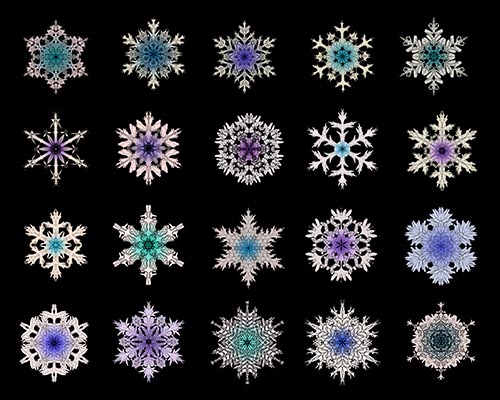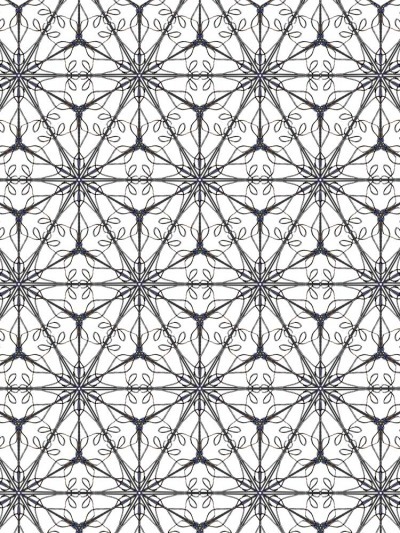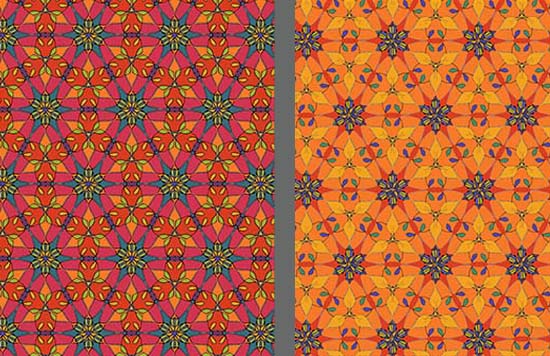Vinyl Memories
 Friday, December 2, 2016 at 04:07PM
Friday, December 2, 2016 at 04:07PM Vinyl might be making a comeback, but I'm ready to sell or dontate my old records. I enjoyed them when I was listening to them, but they've almost all been supplanted by digital editions. Before I let go of them, my son suggested that I take photos of the jacket spines to make a record of what I collected. He also wondered if some albums had a personal meaning for me beyond their musical enjoyment. The few albums I've selected by no means represent the body of my collection, which is primarily jazz and classical. There are no covers for any of my Bill Evans albums or for the various Beethoven recordings I bought. This is not a record of my musical likes, but a sampling of some of the recordings to which I had a personal connection in addition to an aesthetic attachment. Most of the recordings are commercially available, but there are a few unique or out of print items. The audio files I have mounted come from the records displayed here and reflect the condition of the discs.
-------------------------------------------------------------------------------------------------------------------
Dr. Edward Teller The Size and Nature of the Universe (Spoken Arts 735)
On October 4, 1957, the Russians put up the world's first artificial satellite. This event was a Cold War shocker and the United States began an urgent program of research, engineering, and education to produce science and technology to out match the Russians. I was in 8th grade then and I wanted to be a scientist. I saw an

ad in a magazine for a recorded set of lectures by Edward Teller, "father of the H-bomb" and soon after owned this limited release recording produced by Spoken Arts (735) in cooperation with General Dynamics, which was happy to promote its interest in getting large government contracts for military and space work. I tried hard to follow Teller's account of Einstein's theory of relativity and his discourse on the size and nature of the universe. I subsequently learned that I had a much easier time reading science fiction than physics and I eventually became a humanities major in college. Yet, I will always recall the way Teller's thick Hungarian accent lent an aura of gravitas to his fascinating topics and I can applaud whoever was behind this spoken word effort to bring science to the layperson. Teller's Intro to Einstein's Theory
Dave Van Ronk Folksinger (Prestige Folklore FL14012)
Like many college students in the early sixties, I learned to play a guitar and sing folksongs. Dylan, Joan Baez, old folkie tunes. I especially liked finger picking, not that I could do much. Dave Van Ronk, with his gravelly voice and deft fingers, made a big impression on me when he appeared at my college's folk festival in 1962. He sang a number of songs that are on this album. My favorite was "Cocaine Blues", largely because of the finger picking. In 1964, at a summer camp, a fellow counsellor taught me how to pick Van Ronk's version of this song. He had learned it from Van Ronk himself. I still have the tablature he wrote out for me. Cocaine Blues

Bob Dylan The Freewheelin' Bob Dylan (Columbia 8786)

A lot of people don't like Dylan's voice. But I think the way he pitches a song is as inimitable as the words he writes. I was happy to hear he got a Nobel Prize for Literature, but I've tried reading just the words to his songs and it isn't the same as when the song is played and sung. This record had a lot of great songs on it. My favorite was (and still is) "Don't Think Twice, It's All Right" and I think it's because of the style of guitar accompaniment that I like it so much. Some people objected when Dylan went electric, but I think this move launched him into realms of musical richness unavailable in the folk guitar alone. Against the electric Dylan, the earlier folk songs might seem quaint, but if you were around in that era, the songs and the singer continue to have a strong impact on you.
Michael Meeropol Between Lunch and the Library (Swarthmore Records JAC-249)
This badly faded homemade cover has suffered through the years, but it houses a nonpariel set of folk songs played and sung by Michael Meeropol, who was a class ahead of me at college. The word was that Pete Seeger had taught him guitar. The record was made locally and sold on campus. I wonder how many copies still exist.

I did not know Michael, but I longed to be able to play the guitar as he did. I practically wore the vinly down learning a couple of the songs on the album. Eventually, I could do a rough imitation of "San Francisco Bay Blues", but my picking on "Fennario" will always lack Meeropol's deftness and clarity. If there was any single record that posed unfulfillable aspirations for my guitar playing, this was it. "Fennario" played and sung by Michael Meeropol
America to Africa David Amunga and Michael (Mwangaza GT-1)
After college, I joined the Peace Corps. From 1966 through 1968 I taught English and mathematics in high schools in Kenya. The Beatles were very popular there, but I liked Kenyan music. It has a catchy rhythm, sweet guitar licks, and there's a sweetness to many of the songs. "America to Africa" was my favorite song. David Amunga wrote it as a message to the many bright Kenyans who were studying abroad. He hoped the song would help to steer them back to Kenya after the completion of their studies. I left some of myself in Kenya and I still resonate to the song's refrain of "go back home." America to Africa
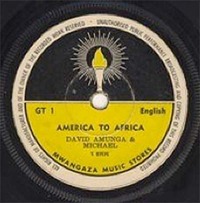
The Firesign Theatre How Can You Be In Two Places At Once When You're Not Anywhere At All (Columbia CS-9884)

I had a friend in grad school who wanted to be a stand up comic. He introduced me to The Firesign Theatre and I was hooked. Never having listened to, let alone heard of, the Goon Squad, which was Firesign's precedent and inspiration, what I heard on the Firesign records was entirely novel to me. A comic tapestry of interconnecting voices conjuring wacky, dreamscape adventures. My favorite is this one. The title screwed itself into my brain stem and has been a lifelong meme. The audio snippet is from the opening number of the title track. The protagonist has just purchased a car and is taking it for a spin on the freeway. I still get a kick out of the way the group voices road signage. All this and I haven't yet mentioned the verbal/visual pun on the cover. It was the late sixties after all. Lots of "revolution" yet to come. Antelope Freeway
Boogie Woogie Red Live at the Blind Pig (Blind Pig Records BP001-74)
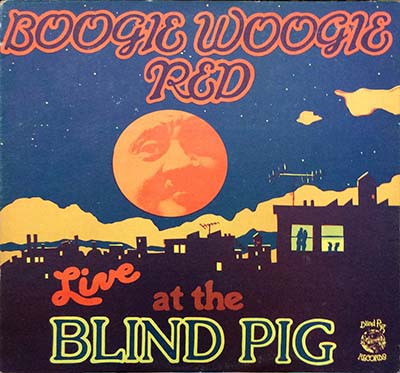
Ann Arbor's the home of the University of Michigan. It's where my two kids were born, where I got my graduate degree, and wheree I got divorced. There were lots of music venues. My favorite was the Blind Pig, which opened in 1974, only a little while before I left A2 for a job in DC. I might have been there when they recorded this Boogie Woogie Red album, which I bought there and it's in pretty good shape for have made the forty year journey to the present. Showtime
During my last couple of months in A2, I worked as a house painter. I also aspired to play the piano and would cycle up to the Music School, where they had scads of open practice rooms. One morning, I was cycling past a friend's house. She was on the porch and beconned me to come inside to meet Tony, one of her housemates. Tony played drums in a band and he was an expert in complex times. He was showing us some of his riffs when we heard a saxophone somewhere outside. We all went to look for the origin of the sound, and there, sitting in the driver's seat of a taxi cab, was David. We invited him inside and he and Tony tried to jam, but David played bebop and Tony's rhythmic sense was too complicated for the lines David was playing. Tony stopped and I asked him if I could try his drum set. It's really weird, because I had never played drums, but somehow I came up with a simple beat that worked and David and I became fast friends. He introduced me to jazz, in particular, Charlie Parker. Later, I went from Parker to Monk to Miles to Bill Evans and backwards to Fats Waller and Teddy Wilson. I particularly responsed to piano jazz and expanded my vinyl collection with records by sidemen who became soloists in their own right, like Tommy Flanagan and Jimmy Rowles. If I don't listen to Charlie Parker any more, his records launched me into a life long enthusiasm for jazz.
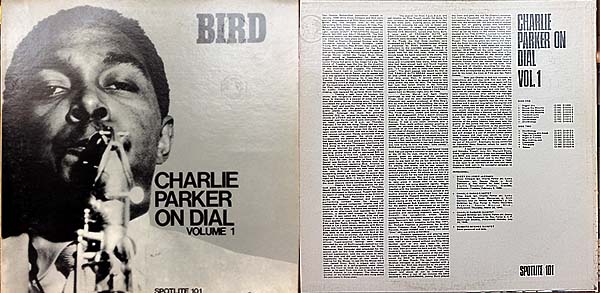
Parker's recording of "Lover Man" occurred on a session in which he was almost incapacitated by drugs. He managed to get through this song, barely, and the outcome is one of the most heartbreaking renditions on record. Details about the recording session are in the record's liner notes. Win the advent of digital downloads, liner notes have all but disappeared. In its immediacy and temporailty, pop music needs no explanatory material. For jazz aficonados (I'm only an enthusiast: I like the music but I don't know a lot about it), jazz is like baseball: there's always an historical backstory. It might be the recording date and something about how the producer had a certain conception to guide the recording date. It is always the sidemen. You absolutely want to know who's backing up the leader. Often the notes are a little essay on the music by a knowledgeable person. All of this enriches the listening experience. At least for sidemen and recording dates there's discogs.com
Otis Spann Sweet Giant of the Blues (Flying Dutchman Bluestime BT 29006)
Ray Charles Ray Charles (Midi WEA Records LTD Midi 30044)
Fats Waller Ain't Misbehavin' (RCA Victor LPM-1246)
I have two kids from a previous marriage. When they were little, they came to visit about four times a year for a week each visit. I'd put on Otis Spann's "Got My Mojo Working"
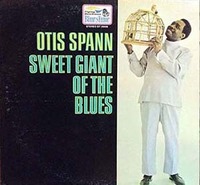
and follow it with "Mess Around" by Ray Charles
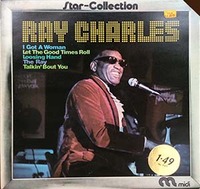
and they would jump around the room like popcorn in a hot kettle. Who can't get a big charge out of Spann's ebulliant piano runs? Ray Charles opens in the same way as Spann.
The kids enjoyed this music, but they really got into Fats Waller and forty years later, they can still sing Waller songs. One of my favorite cuts from this record is "Two Sleepy People."

Beaux Arts Trio Haydn Piano Trios (Philips 6768 077)

I got into jazz with the help of my friend David and Charlie Parker records. I got into chamber music through intuition and a leap of faith. I was in Tower Records one night, perusing the acres of vinyl, and I came upon a set of piano trios: 43 trios on 14 discs. I had listened to very little chamber music, but something told me that these trios would be beautiful. And they were. All of them. And I was led to more chamber music, and then solo piano pieces, mostly by Bach and Haydn, but also Beethoven, and even a bit of Schoenberg.
I don't listen to the Beaux Arts Trio any more. I've bought digital replacements by two different groups and I enjoy the pieces even more. But now I am left with this big box of discs. Five pounds of beautifully crafted vinyl. I guess I could sell the box on ebay, but after checking prices for what's up there, I wouldn't get much. Maybe the local used vinyl store handles a few classical items.



